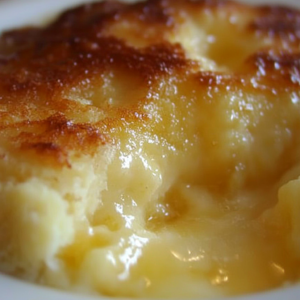Sharing is caring!
Table of Contents
ToggleIntroduction to Rosemary Parmesan Bread
Embark on a culinary adventure with Rosemary Parmesan Bread, a delightful blend of aromatic rosemary and rich Parmesan cheese that transforms the humble loaf into a gourmet experience. This bread, rooted in the traditional Italian baking art, brings a fusion of fragrant herbs and savory cheese, tantalizing your taste buds with every bite.
Rosemary Parmesan Bread is not just about its mouth-watering flavors. It’s a testament to the simplicity and creativity in baking. The key lies in its fresh, high-quality ingredients. Rosemary, a herb celebrated for its fragrant aroma and medicinal qualities, pairs wonderfully with the nutty, salty essence of Parmesan. This duo infuses the bread with an irresistible aroma and taste that makes it a standout dish.
The joy of making Rosemary Parmesan Bread lies in the process itself. From selecting the finest rosemary sprigs to grating fresh Parmesan cheese, every step is a chance to pour love and care into your baking. As you knead and shape the dough, you connect with centuries-old baking traditions, creating a loaf that’s not just food but a piece of culinary art.
So, whether you’re a seasoned baker or trying your hand at homemade bread, Rosemary Parmesan Bread promises a rewarding and delicious experience. It’s a perfect match for a variety of dishes or delightful on its own, making it a versatile addition to your baking repertoire. Get ready to fill your kitchen with the warm, inviting scent of this magnificent bread, and enjoy the satisfaction of baking from scratch.
History and Origin of Rosemary Parmesan Bread
The “Rosemary Parmesan Bread” intertwines its savory journey with the rich traditions of Italian baking. In Italy, a land celebrated for its diverse bread varieties, each region boasts unique creations, with herb-infused breads holding a special place. The genesis of adding herbs like rosemary and cheese to bread stems from a desire to enhance flavor with locally available ingredients.
Historically, bakers in ancient Italy often experimented with herbs and cheeses to elevate their bread. Rosemary, abundant in the Mediterranean, emerged as a favorite for its aromatic and medicinal properties. Its piney fragrance and slightly minty, peppery flavor blend seamlessly into the bread, making it a staple in Italian kitchens.
The inclusion of Parmesan, a cheese with a rich history dating back to the Middle Ages, transformed the bread into a luxurious treat. Known for its nutty, salty essence, Parmesan enhances the bread’s flavor profile, creating a delightful contrast with the aromatic rosemary.
This combination of rosemary and Parmesan, a testament to Italian culinary ingenuity, has stood the test of time. Today, “Rosemary Parmesan Bread” symbolizes a perfect melding of tradition and flavor, a legacy of Italy’s rich baking heritage that continues to enchant palates globally.
Key Ingredients and Their Benefits in Rosemary Parmesan Bread
Crafting the perfect Rosemary Parmesan Bread starts with selecting high-quality ingredients that not only add irresistible flavors but also offer health benefits.
Rosemary’s Robust Flavor and Health Perks: Rosemary, the star herb in this bread, infuses a distinct, aromatic touch. Beyond its tantalizing scent and taste, rosemary boasts anti-inflammatory properties and antioxidants, making it a healthful addition to your diet.
The Richness of Parmesan Cheese: Parmesan, a cornerstone for the bread’s savory depth, is more than a flavor enhancer. It’s a powerhouse of nutrients, packed with calcium, protein, and essential vitamins. Its rich, nutty taste elevates the bread’s overall profile.
Flour – The Foundation: The choice of flour greatly influences the bread’s texture. Opt for a mix of all-purpose and whole wheat flour. This combination ensures your Rosemary Parmesan Bread has the ideal balance of softness and a hearty feel.
Each ingredient in Rosemary Parmesan Bread plays a pivotal role, from rosemary’s fragrant contribution to Parmesan’s rich depth, all held together by the perfect blend of flours. Together, they create not just a bread, but an experience that’s as nutritious as it is delicious.
Step-by-Step Baking Guide for Rosemary Parmesan Bread
- Gather Your Ingredients: Start by assembling all necessary ingredients for your Rosemary Parmesan Bread. You’ll need all-purpose flour, whole wheat flour, fresh rosemary, grated Parmesan cheese, yeast, warm water, salt, and a bit of sugar.
- Prepare the Yeast Mixture: In a bowl, dissolve yeast and sugar in warm water. Wait for about 10 minutes until it becomes frothy, signaling that the yeast is active.
- Mix the Dry Ingredients: In a separate large bowl, whisk together the flours and salt. Chop your fresh rosemary finely and add it to the mix.
- Combine Wet and Dry Mixtures: Pour the yeast mixture into the dry ingredients. Add grated Parmesan cheese and begin mixing to form a dough.
- Knead the Dough: Turn the dough onto a floured surface and knead for about 10 minutes. The dough should be smooth and elastic.
- First Rise: Place the dough in a greased bowl, cover it with a cloth, and let it rise in a warm place. It should double in size, which typically takes about 1 hour.
- Shape the Bread: Once risen, punch down the dough gently. Shape it into a loaf or any desired shape and place it on a baking sheet lined with parchment paper.
- Second Rise: Allow the bread to rise again, this time for about 30 minutes. It should increase noticeably in size.
- Bake Your Bread: Preheat your oven. Bake the Rosemary Parmesan Bread until it turns golden brown and sounds hollow when tapped. This usually takes about 25-30 minutes.
- Cool and Enjoy: Let the bread cool on a wire rack before slicing. Enjoy your freshly baked Rosemary Parmesan Bread, relishing its aromatic and flavorful delight
Variations and Creative Twists on Rosemary Parmesan Bread
Rosemary Parmesan Bread offers endless possibilities for creative twists and delightful variations. By experimenting with different ingredients and techniques, you can tailor this classic recipe to suit your taste buds and dietary preferences.
- Herb Infusions: While rosemary is the star herb, don’t hesitate to mix in other aromatic herbs like thyme, oregano, or basil. Each herb adds its unique flavor, creating a symphony of tastes in every bite.
- Cheese Varieties: Parmesan is a classic choice, but why not explore other cheeses? Incorporate sharp cheddar for a tangy twist, or try mozzarella for a softer, melt-in-your-mouth experience. Each cheese brings a new dimension to the bread’s flavor profile.
- Gluten-Free Options: Cater to gluten sensitivities by replacing traditional flour with gluten-free alternatives like almond or coconut flour. This switch ensures everyone can enjoy the savory goodness of Rosemary Parmesan Bread without dietary concerns.
- Vegan Adaptations: To make a vegan version, swap out dairy cheese for nutritional yeast or vegan cheese varieties. These substitutes mimic the savory depth of Parmesan while keeping the recipe plant-based.
- Seed and Nut Add-Ins: For an extra crunch and nutritional boost, fold in seeds like pumpkin, sunflower, or sesame. Nuts like walnuts or pecans also complement the bread’s flavors and add a satisfying texture.
- Sweet and Savory Fusion: Introduce a sweet element like sun-dried tomatoes or caramelized onions to balance the savory notes of rosemary and Parmesan. This combination creates a delightful contrast in flavors.
- Shape and Size Variations: Experiment with different shapes and sizes, from individual rolls to braided loaves. These variations not only make the bread visually appealing but also fun to eat.
Each twist on Rosemary Parmesan Bread invites you to explore new flavors and textures, turning the classic recipe into a personal culinary adventure.
Pairing and Serving Ideas for Rosemary Parmesan Bread
Rosemary Parmesan Bread, with its aromatic herbs and rich cheese, transforms any meal into a gourmet experience. This bread pairs exceptionally well with a variety of dishes, making it a versatile addition to your culinary repertoire.
1. Soup and Stew Companion: The robust flavors of Rosemary Parmesan Bread make it an ideal accompaniment to soups and stews. Dip it into a hearty bowl of minestrone or a creamy tomato soup for a satisfying meal.
2. Salad Enhancer: Elevate a simple salad by serving it with slices of this fragrant bread. The savory notes of rosemary and Parmesan perfectly complement the freshness of greens and vinaigrettes.
3. Charcuterie and Cheese Boards: Add an artisanal touch to your charcuterie or cheese board with chunks of Rosemary Parmesan Bread. Its flavors pair beautifully with a variety of cheeses, cured meats, and olives.
4. Elegant Bruschetta Base: Use thin slices as a base for bruschetta. Top with fresh tomatoes, basil, and a drizzle of olive oil for a classic Italian appetizer.
5. Breakfast Upgrade: Start your day with a gourmet twist by using this bread for your morning toast. Top with avocado or a poached egg for a delicious breakfast treat.
6. Pasta Sidekick: Serve alongside your favorite pasta dishes. The bread’s savory profile complements both light and rich sauces, from a simple aglio e olio to a hearty Bolognese.
Remember, Rosemary Parmesan Bread not only enhances the flavors of your dishes but also adds a touch of elegance to your dining table. Its versatility and irresistible taste make it a must-try for any food enthusiast
Storage and Preservation
Proper storage and preservation are crucial for enjoying your Rosemary Parmesan Bread to its fullest. Here’s how to keep it fresh and delicious:
- Cool Before Storing: Always let your Rosemary Parmesan Bread cool completely before storing. Storing it warm can lead to moisture build-up, resulting in a soggy texture.
- Room Temperature Storage: For short-term storage, wrap the bread in a clean cloth or place it in a paper bag. This method maintains its crusty exterior and soft interior for 2-3 days.
- Refrigerating the Bread: Although not ideal for long-term freshness, you can refrigerate Rosemary Parmesan Bread if necessary. Wrap it tightly in plastic wrap or aluminum foil to prevent drying out. This method can extend its life for up to a week.
- Freezing for Longevity: For long-term storage, freezing is your best option. Slice the bread for convenience, wrap it tightly in plastic wrap, and then in aluminum foil. Frozen Rosemary Parmesan Bread can last for up to three months. Thaw it at room temperature when ready to eat.
- Reheating Tips: To revive your Rosemary Parmesan Bread, warm it in an oven at 350°F for about 10 minutes. If frozen, there’s no need to thaw; directly heat it in the oven, adding a few extra minutes.
Remember, the key to enjoying your homemade Rosemary Parmesan Bread lies in how well you store it. Follow these tips to savor its fresh, aromatic flavor for as long as possible.
Troubleshooting Common Baking Issues
When baking Rosemary Parmesan Bread, you might encounter a few challenges. Here’s a quick guide to help you overcome these common issues:
- Dough Isn’t Rising: Yeast is the key. Ensure it’s fresh and active. If your dough doesn’t rise, the yeast might be old or the water used was either too hot or too cold. Ideal water temperature should be lukewarm, around 105-110°F.
- Bread Is Too Dense: This often results from insufficient kneading or not allowing enough time for the dough to rise. Knead the dough until it’s smooth and elastic. Also, give it ample time to rise in a warm, draft-free environment.
- Crust Is Too Hard: A crust that’s too hard could be due to over-baking or too high oven temperature. Monitor your baking time and check your oven’s accuracy with a thermometer.
- Bread Is Undercooked Inside: If the outside looks perfect but the inside is undercooked, lower the oven temperature and extend the baking time. This allows the bread to cook through without burning the crust.
- Flavors Aren’t Pronounced: For the best flavor, use fresh rosemary and high-quality Parmesan cheese. The freshness of your ingredients significantly impacts the taste of your Rosemary Parmesan Bread.
- Bread Is Sticking to the Pan: Always grease your pan properly or use parchment paper. This prevents sticking and ensures easy removal of your bread after baking.
Remember, baking is a science, and every detail counts. Don’t get discouraged by these issues; instead, use them as learning experiences to perfect your Rosemary Parmesan Bread. Happy baking!
Community and Sharing: The Heartwarming World of “Rosemary Parmesan Bread” Enthusiasts
Sharing the love for “Rosemary Parmesan Bread” extends far beyond the kitchen. It’s a passion that brings together a community of enthusiastic home bakers and food lovers. In this digital era, the internet serves as a melting pot where recipes, experiences, and tips about this delightful bread circulate generously.
Online forums and social media groups dedicated to bread baking are bustling with activity. Here, seasoned bakers and novices alike share their triumphs and challenges with “Rosemary Parmesan Bread”. It’s a space where a photo of a perfectly crusted loaf receives applause and a troubleshooting query gets a multitude of helpful responses.
Local baking classes and workshops also play a vital role in fostering this community. They offer hands-on experiences, where the joy of kneading dough and the anticipation of the baking process are shared in real-time. These gatherings often end with participants breaking bread together, symbolizing unity and the shared love for “Rosemary Parmesan Bread”.
Moreover, food blogs and websites contribute to this thriving community. They offer a plethora of variations on the classic “Rosemary Parmesan Bread”, adapting the recipe to different tastes and dietary needs. These platforms not only provide step-by-step guides but also encourage readers to experiment and add their personal touch to the recipe.
This sense of community and sharing is what makes “Rosemary Parmesan Bread” more than just a recipe; it’s a source of connection and joy. Whether it’s through a shared recipe, a baking tip, or a story about a bread-baking adventure, every interaction adds a unique flavor to the rich tapestry of the “Rosemary Parmesan Bread” community.
The Joy of Baking at Home
Baking Rosemary Parmesan Bread at home is a joyous and fulfilling adventure. This journey begins when you mix the fragrant rosemary with the nutty Parmesan, creating a harmonious blend of flavors that awakens your senses. Each step, from kneading the dough to watching it rise, is a testament to the love and care you pour into this culinary creation.
As you work the dough, there’s a connection to the timeless art of baking, a craft passed down through generations. The scent of rosemary fills your kitchen, mingling with the rich aroma of baking bread, creating an atmosphere of warmth and comfort. When the bread finally comes out of the oven, golden and inviting, the sense of accomplishment is overwhelming.
Cutting into the freshly baked loaf of Rosemary Parmesan Bread, you hear the satisfying crunch of the crust, followed by the sight of the soft, airy interior. With each bite, the flavors of rosemary and Parmesan dance on your taste buds, reminding you why baking at home is such a special, rewarding experience. It’s not just about the delicious end product, but also about the joy found in the process – the mixing, the kneading, the anticipation, and the final reveal.
Embracing home baking, especially with delightful recipes like Rosemary Parmesan Bread, brings a unique satisfaction. It’s a way to express creativity, share love, and enjoy the simple pleasures of life. Every loaf tells a story, a delicious narrative of tradition, innovation, and the joy of homemade goodness.






